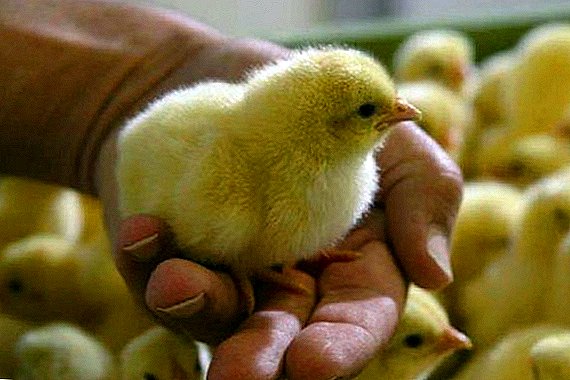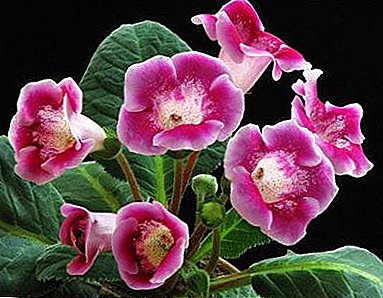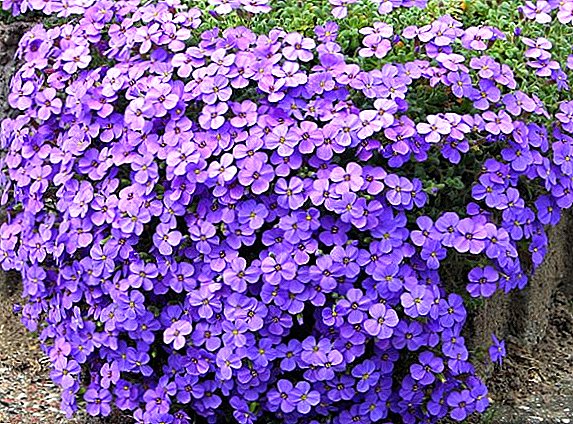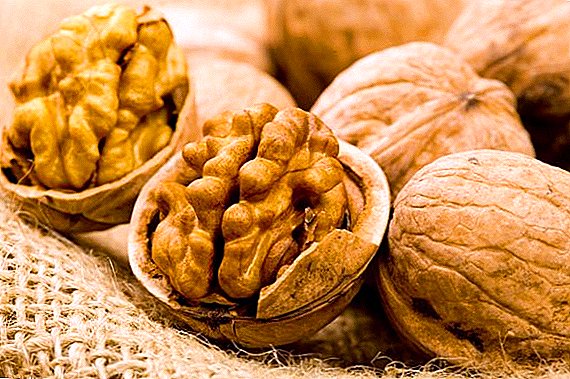 The horse has weak points: the gastrointestinal tract and legs.
The horse has weak points: the gastrointestinal tract and legs.
Fortunately, it is not very difficult to distinguish a sick animal from a healthy one, so there is every chance to help in time and prevent the development of the disease or the death of the animal.
Consider the common diseases in horses, their clinical picture, treatment and possible prevention.
Infectious diseases of horses
Infectious diseases are distinguished by the fact that their pathogens are harmful and dangerous microbes, infection of which often leads to death in animals, there is also a danger of being infected by them and to humans.
Having noticed any of the symptoms that are characteristic of this group of diseases, two most important actions should be taken: to determine the sick animal for quarantine and call the veterinarian. The seriousness and danger of diagnoses leaves no room for self-medication.
Did you know? Personnel working in stables and serving animals, much less than other people fall ill with colds. The fact is that a pair of manure and horse sweat play the role of sanitation of the respiratory tract.
Glanders
The ways of infection of this disease are as follows: pus, sputum, or discharge from an infected animal. In the horse's body, the pathogen bacterium enters through the inventory, feces, water, air, food.  Depending on the course of the disease, the clinical picture changes.
Depending on the course of the disease, the clinical picture changes.
Important! The bacterium that causes glanders is extremely unstable to high temperatures, disinfection or environmental influences, in particular, sunlight.
Symptoms characteristic of glanders:
Acute current:
- body temperature up to +42 ° C;
- yellow bubbles are formed on the mucous membranes, which develop into ulcers, they can also affect the inner part of the thigh and limbs;
- the depressed state of the animal;
- condensed and enlarged lymph nodes under the jaw, hot to the touch.
With chronic form:
- elevated temperature of croup;
- weight loss;
- persistent cough;
- nasal discharge;
- enlarged lymph nodes under the jaw;
- ulcers in the form of an asterisk on the nasal mucosa.
With latent form disease symptoms of glanders in a horse do not appear throughout life, but the virus is present in the body.
Treatment: this disease is not treated, the animal is subjected to euthanasia.
Prophylaxis will be:
- quarantine purchased livestock;
- malleinization of the herd (eye instillation with special drops, by the reaction it is possible to identify infected animals);
- identifying the source of infection, complete disinfection of the stall and equipment is carried out, the herd is sent to quarantine for 1.5 months (the incubation period of the disease).
Myt
The causative agent of this disease is extremely resistant to the effects of various factors, this type of streptococcus can live in the body of the donor up to 6 months. The main source of infection is infected animals and carriers with stronger immunity. Typical ways of domestic transmission: water, food, equipment.  Symptoms of myta:
Symptoms of myta:
- the mucous membranes of the nose, throat, and lymph nodes are inflamed, filled with pus;
- nasal discharge;
- enlarged lymph nodes under the jaw;
- body temperature is up to +41 ° С, the animal is in a fever;
- possible development of bronchopneumonia;
- passive, no appetite.
During treatment, perform the following actions:
- to speed up the process of opening the abscesses, lymph nodes or warm, or independently open;
- enter "Penicillin" in the dosage of 1-2 thousand U / per 1 kg of horse weight, intramuscularly;
- 200 ml of a solution consisting of 33% alcohol, concentrated glucose (20-30%) and 1% "Norsulfazol" are injected intravenously - such a measure is taken in case of damage to internal organs.
Prevention:
- quarantine purchased livestock;
- foals and old horses (the most vulnerable of the common herd) are placed in stable conditions, without changes in temperature and humidity;
- affected individuals are isolated from the herd, fed and watered from their personal equipment.
Horse Flu
The way of infection with the flu is airborne, and you can also get infected by the discharge of a sick animal.  Symptoms of a flu horse:
Symptoms of a flu horse:
- apathy;
- lack of appetite;
- ruffled wool;
- body temperature up to +41 ° C;
- cough first wet, then dry, barking;
- reddish nasal fluid;
- colorless discharge may occur from the eyes and nose.
If the animal is able to overcome the disease, then the developed immunity will work for a year.
Important! Orthomyxovirus, which is the causative agent of equine influenza, is dangerous for humans. This specific form of influenza is manifested in a person less acutely or asymptomatically, but if you have been in contact with a sick animal, be sure to consult a doctor for a diagnosis and, if necessary, to prescribe treatment.
During the treatment:
- make inhalation with turpentine or 2% sodium bicarbonate solution;
- if the situation is aggravated, use antibiotics or sulfa drugs (as prescribed by a veterinarian).
Prevention:
- quarantine of newly purchased livestock;
- six-month immunity vaccination;
- favorable conditions of detention.
Rhinopneumonia
Sources of infection are excretions during spontaneous abortion or breathing of a sick animal. Complications of this disease - paralysis and paresis - can be fatal.  Symptoms inherent in this disease:
Symptoms inherent in this disease:
- sudden fever in foals, as well as complications: rhinitis, conjunctivitis and pneumonia;
- in an adult horse, body temperature rises within 3 days, the animal is depressed, refuses to eat;
- in a mare infected with a colt, a miscarriage occurs arbitrarily in 100% of cases, most often in the 2-3 semester of pregnancy, sometimes dead foals can be born.
Important! The virus that causes rhinopneumonia is very unstable to disinfectants, fat-containing drugs and high temperatures.
The approach to treatment depends on the age of the animal:
- young stock is treated with antibiotics (prescribed by a veterinarian);
- the adult generation is treated with injections of "Novarsenol" and "Sovarsen" in dosages prescribed by a veterinarian.
Prevention means:
- vaccination of new horses in the herd;
- purchase of livestock grown only in prosperous areas and on proven farms.
Infectious anemia
Infection is transmitted through flying and blood-sucking insects (mosquitoes, gadflies).  The overall picture of the disease is typical:
The overall picture of the disease is typical:
- alternation of low and high body temperature;
- anemia.
Important! The virus is weakened by exposure to ether, high temperatures and disinfectants.
Symptoms diseases vary depending on its course.
Super Sharp Phase:
- a sharp rise in body temperature;
- the depressed state of the animal;
- point subcutaneous hemorrhage.
Acute phase (the probability of death in it reaches 85%):
- mucous membranes drained of blood;
- swollen belly, thoracic and limbs also swell;
- the animal is in a fever.
Subacute state replaces acute and is visually expressed in the apparent weakening of intoxication and improving the overall condition.
Chronic course:
- the animal is periodically reeling;
- from time to time it loses weight;
- anemia mucous.
Treatment: today, unfortunately, there is no effective therapy for this disease.
Learn more about the treatment of infectious anemia.
Prevention:
- quarantine of new livestock;
- elimination of carriers of infection.
Infectious encephalomyelitis
Carriers of encephalomyelitis are ticks and mosquitoes. The pathogen virus is acutely manifested, affects and frustrates the central nervous system, touches the internal organs, causing their paresis and jaundice.  Symptoms of the presence of the virus in the body:
Symptoms of the presence of the virus in the body:
- short-term body temperature rises;
- a sick animal refuses to eat;
- often yawns;
- the state is apathetic and depressed, or, conversely, a horse is violent, often escapes from a leash, adopts unnatural postures.
Important! This virus is afraid of exposure to high temperatures and ultraviolet radiation, but in the cold it is remarkably preserved.
Treatment requires an integrated approach, but there are chances for recovery.
The therapy complex includes:
- quarantine of a sick animal in a dark room;
- bowel cleansing;
- installation of the probe in the nasal passage, through which every 12 hours pour in 100 g of sodium sulfate;
- Inject camphor oil subcutaneously, 4-6 times a day, 20 ml each;
- There is a practice of subcutaneous input of oxygen in the amount of 10 liters (entrust this matter to the veterinarian).
If the animal survives after treatment, then immunity to the disease is effective until the end of life.
Prevention:
- quarantine of newly acquired livestock;
- isolation of sick animals;
- disinfection of the stall and inventory;
- treatment with bloodsucking insects;
- sparing operation and training;
- proper content.
Anthrax (malignant carbuncle, anthrax)
The disease is transmitted from animal to animal, as well as from animal to human. This is one of the most dangerous and until recently incurable infection that has affected and claimed the lives of residents of entire settlements.  The main route of infection is spores that have fallen to animals with feed prepared in unfavorable areas.
The main route of infection is spores that have fallen to animals with feed prepared in unfavorable areas.
Did you know? Back in the 18th century, anthrax "mowed down" entire cities on a plague level. She came to Russia through Siberia. The first city that confronted her was Chelyabinsk. He was on the verge of extinction from an unknown disease. In 1786 an expedition headed by Dr. Andrievsky and his assistant Zhukovsky was sent there. Not finding ways to solve this problem, for the first time in the history of medicine, Andrievsky himself infected himself with the disease and during the struggle gave descriptions of the symptomatic picture, indicated ways of infection (he proved that people are infected by animals), methods of treating a terrible disease and its prevention. The doctor survived, his achievements saved thousands of lives, and his descriptions are still relevant today in the fight against the anthrax epidemic.
Symptoms of anthrax: A carbuncle is formed at the site of microbial invasion of the animal, a hard tubercle that develops into a large ulcer. Since in most cases the ingestion of an animal occurs with food, they manifest in the lungs or the digestive tract.
Depending on the stage and course of the disease, the symptomatic picture may vary.
Lightning development:
- the horse rises sharply and the body temperature also drops sharply;
- the animal is extremely excited;
- the color of the mucous on the eyes is blue;
- the animal's body is subjected to severe convulsions, it loses consciousness and dies.
Acute current:
- a sharp jump in body temperature up to +42 ° С;
- shiver;
- eyes are bloodshot, mucous blue;
- strong colic gives a very painful stomach.
Important! The causative agent multiplies in record time. It is very resistant to high temperatures and a variety of disinfectors. Even when boiling it dies no earlier than an hour!
Chronic course:
- the jaw of the horse swells;
- pharyngeal and submandibular lymph nodes are enlarged and swollen;
- weight is lost.
 Treatment must be carried out necessarily with the participation of the veterinarian.
Treatment must be carried out necessarily with the participation of the veterinarian.The therapeutic complex includes:
- the introduction of an injection of serum against anthrax, dosage from 150 to 200 ml, depending on the weight of the animal;
- 60 to 80 ml of gamma globulin, depending on weight;
- antibiotics of the penicillin group, dosage from 1 to 2 thousand. U / 1 kg of live weight.
Prevention:
- Starting at 3 months, vaccination against anthrax every 6 months;
- if the animal survived the disease, the acquired immunity has a lifelong effect.
Did you know? AT 2001-2002 anthrax spores were applied as bacteriological weapons through mailing lists in the United States. Guilty of mass terrorism in the United States have not yet been found.
Rabies (Rabies, hydrophobia)
Rabies is another dangerous infection transmitted from animals to humans. When it is a complete defeat of the central nervous system. The virus is transmitted through the saliva of an infected animal, bite or scratch. The result is unchanged - a fatal outcome.  Symptoms of rabies:
Symptoms of rabies:
- the horse becomes violent, aggressive;
- the animal roars loudly and continuously;
- the horse digs the pit hoofs;
- abundant salivation occurs.
Important! The virus weakens under the influence of high temperature: if it is above +60 ° C, it dies within 10 minutes. It can also be destroyed by alkali or acid.
Most often, animals show aggression to individuals of their own species or to dogs. The incubation period can range from several days to 1.5 months. After that, the virus paralyzes the limbs and the animal dies.
Treatment: As of today, there is no effective treatment for the disease, so a diseased animal will kill and kill its body as soon as possible. It is important to dispose of it so that the virus does not spread further into the farm, for example, burn it.
Prevention:
- rabies vaccination;
- 30-day quarantine of newly arrived animals.
Tuberculosis
The infection is extremely resistant to temperatures and disinfectors, getting into the internal organs of the horse, forms there hillocks, which subsequently die. The source of the disease is absolutely all secretions and waste products of an infected animal.  Microbacteria are very tenacious: in water - up to 6 months, on pasture and in animal feces - up to 1 year, in the ground - up to 2 years.
Microbacteria are very tenacious: in water - up to 6 months, on pasture and in animal feces - up to 1 year, in the ground - up to 2 years.
Symptoms for tuberculosis:
- body temperature is raised to +40 ° С and lasts for a long time;
- persistent strong cough with secretions that contain impurities of dead tissue;
- lymph nodes are inflamed;
- heavy breathing with shortness of breath;
- in the lungs wheezes are clearly heard;
- dramatically reduced weight;
- skin loses moisture and elasticity.
Treatment: effective treatment does not exist today. Sick animal must be eliminated. The whole flock is transferred to quarantine and veterinary examination is carried out.
Prevention: in fact, it is not. But at the first signs of a disease, quarantine is the only way to minimize the fall of the entire herd.
When keeping a horse, it is important for you to know everything about the horse's anatomy.
Pasteurellosis
Infection that is dangerous for both wild and domestic animals, as well as for humans. The lethal outcome is from 10 to 80%. The pathogen bacterium is Pasteurella. It lasts up to a month in the ground or in water, and in feces up to 80 days. The first clinical symptoms in animals - runny nose.  Symptoms:
Symptoms:
Symptoms vary with the phase and course of the disease.
Important! The bacterium is easily eliminated by exposure to high temperatures and disinfectants.
Super Sharp Form:
- sharp increase in body temperature;
- diarrhea;
- as a rule, further - death.
Acute form:
- increased body temperature up to +42 ° C;
- apathy;
- coughing and wheezing;
- discharge from the eyes and nose;
- body swelling;
- diarrhea.
 Chronic form (arises if the artiodactic has experienced an acute course of the disease):
Chronic form (arises if the artiodactic has experienced an acute course of the disease):- critical weight loss;
- joints become inflamed and swollen;
- anemia occurs.
Treatment involves the complex use of drugs:
- 70-80 ml anti-pasterope serum;
- antibiotics of the tetracycline group and sulfonamides (as prescribed by the veterinarian).
Prevention:
- timely anti-vascular vaccination;
- immunization of animals that come in contact with sick animals;
- quarantine of affected livestock;
- regular room treatment with disinfectors;
- timely disposal of faeces from pens.
Leptospirosis
This disease also poses a risk to humans. Leptospira, entering the body of an animal, infects internal organs and, ultimately, tissue necrosis, rejection of the fetus in pregnant females, anemia and yellowness occur.  Symptoms vary depending on the intensity of the course of the disease.
Symptoms vary depending on the intensity of the course of the disease.
Acute form:
- high body temperature, the horse is in a fever;
- blood in the urine;
- the skin is yellowish;
- necrosis of the mucous membranes of the mouth, eyes, skin;
- disorder in the gastrointestinal tract (either diarrhea or constipation);
- if the mare is pregnant, she will lose the fetus.
Important! Even having coped with the disease, the horse continues to be a carrier of the microorganism in the urine for a long time.
Subacute form: all symptoms persist, only less acutely occur.
Chronic form: a loss in weight and productivity is added to the situational picture of the subacute state.
Treatment: every 12 hours for 5 days, use "Streptomycin" in the dosage of 10-12 thousand. Units / 1 kg of weight.
Prevention:
- quarantine of purchased individuals;
- disinfection of premises and equipment;
- routine preventive examinations of the herd;
- deratization area.
Listeriosis
Nervous system damage, sepsis, miscarriages and mastitis in mares - the results of listeriosis, an infection affecting livestock and poultry. The causative agent - Listeria - is very resistant to environmental influences, however, it is removed by disinfecting agents for disinfection.  Infection occurs by ingestion of waste products and secretions from sick individuals to healthy ones.
Infection occurs by ingestion of waste products and secretions from sick individuals to healthy ones.
Important! Listeriosis is characterized by incessant tearing.
Symptoms identified depending on the clinical picture.
Nervous form characteristic:
- increased body temperature;
- apathy;
- oppression;
- diarrhea;
- tearing;
- fear of the light;
- refusal to eat;
- convulsions, then - death.
Genital picture in mares:
- spontaneous abortion;
- problems with the afterbirth;
- mastitis;
- endometritis.
 Atypical manifestations are characterized by:
Atypical manifestations are characterized by:- pneumonia;
- gastroenteritis;
- fever.
Medical complex it is used more to alleviate the condition of the horse, because it brings no result. At the initial stage of the disease, veterinarians inject a dose of "chlortetracycline" (30 ml / 1 kg body weight) every 8 hours. Even if it was possible to eliminate the disease, the treatment is not stopped for another 3 days.
Prevention of listeriosis:
- deratization of the room;
- feeding high-quality feed;
- quarantine of individuals at the first signs of the disease;
- elimination of heads with signs of nervous damage;
- contact group vaccination and antibiotic administration.
Smallpox
This viral disease is dangerous for both animals and humans, with a high level of mortality. Symptoms of the disease: purulent rash over the entire body of the animal and fever. The source is a sick animal.  Symptoms:
Symptoms:
- stomatitis with purulent nodes;
- dermatitis with purulent blisters;
- weight loss;
- frequent occurrence is lameness, since smallpox often affects the part of the legs where the joints flex.
The treatment complex includes:
- antibiotics;
- gamma globulins;
- ointment for fighting smallpox ulcers;
- rinsing the mouth with boric acid;
- drink plenty with potassium iodide throughout the treatment.
If the individual has survived, she remains lifelong immunity to the disease.
Smallpox Prevention:
- isolation of animals at the first suspicions of the disease in them;
- 20-day quarantine of the whole herd;
- dead from smallpox horses burned without sanding.
Salmonellosis
The paratyphoid (the second name of the disease) mainly affects foals raised on artificial feeding. The pathogen most often gets to them through the litter or inventory and affects the internal organs.  Symptoms depend on the course and nature of the disease.
Symptoms depend on the course and nature of the disease.
The acute course of the disease is characterized by:
- critical fever;
- fever;
- rejection of foals from mother's milk;
- depressed and passive behavior;
- diarrhea with blood and mucus.
The chronic form occurs 5 days after the disease and is complicated by:
- the development of pneumonia;
- inflammation of the joints.
The overwhelming majority of diseased foals die in the first week after infection. If the young horse has survived, it means that he has developed immunity for himself, but he is a carrier of this disease and for a long time will be significantly lagging behind in development.
The foal mare in most cases loses the fetus or gives birth to an unviable foal.
Symptoms in a pregnant female:
- fever;
- great anxiety;
- discharge of mucus from the vagina.
 The treatment can be carried out comprehensively, with all drugs at the same time:
The treatment can be carried out comprehensively, with all drugs at the same time:- antibiotics ("Levomitsetin", "Sintomitsin");
- sulfonamides;
- nitrofurans (all drugs are prescribed only by a veterinarian).
Prevention:
- disinfection of the maintenance premises (quicklime);
- vaccination foals;
- adding premix to the food of young and zhereba mares.
Non-contagious diseases of horses
Non-contagious diseases, as a rule, accompany infectious diseases or arise as a result of improper feeding, care and exploitation of horses. The main prevention can only be the creation of optimal conditions of detention: suitable temperature, humidity, lighting, as well as walks and comprehensive regular meals.
This group of diseases also requires qualified veterinary assistance in diagnosis, prescription and schedule of medication.
Did you know? If you put two buckets in front of the horse: one with coffee and the other with cocoa, then in most cases she will choose a coffee bucket.
Respiratory diseases
All mammals are susceptible to respiratory diseases. In horses, they manifest as colds or allergic manifestations that arise from spores of fungi in hay, straw, and also from dust.  Common symptoms for upper respiratory problems:
Common symptoms for upper respiratory problems:
- runny nose;
- cough;
- increased body temperature;
- nasal discharge.
The treatment complex includes:
- bronchodilators - the main group of drugs for respiratory diseases;
- steam inhalations with essential oils and infusions;
- irrigation of the nostrils with infusions of herbs or Furacilin solution;
- antibiotics, antibacterial and anti-inflammatory drugs (prescribed by a veterinarian);
- content in warm rooms, without drafts.
Prevention:
- annual vaccination;
- proper conditions of detention and care.
Digestive pathologies
Problems and pathologies of digestion arise due to the fact that a horse has a small stomach and there is no gag reflex, therefore everything that got into the gastrointestinal tract will pass through it and will only develop naturally. This group of diseases among the non-communicable diseases takes the first place.  It leads to a decrease in the efficiency of the animal, loss of breeding qualities, and sometimes death.
It leads to a decrease in the efficiency of the animal, loss of breeding qualities, and sometimes death.
For problems with the gastrointestinal tract, the following common symptoms are observed:
- horse restless;
- takes unnatural postures (forcedly);
- refuses to eat and drink;
- there is diarrhea or constipation;
- disorders of the respiratory, urinary or cardiovascular systems.
Treatment is prescribed depending on the diagnosis.
Prevention means:
- control of the usefulness of the diet;
- exclusion from the diet of raw herbs;
- not to give oats on an empty stomach;
- before grazing feed hay.
Colic
The combination of painful symptoms in diseases of the digestive system in which the peritoneal membranes stretch covering the internal organs and muscles of the intestinal walls are called colic.  Their symptoms are:
Their symptoms are:
- horse restless, tossing about in the stall;
- may rush to surrounding objects and hurt themselves;
- tries to touch the abdomen with the hind limbs or digs the earth beneath;
- can roll from side to side;
- in chronic colic, the animal is depressed, lies more;
- may be "in the soap" in the shoulders, neck, croup;
- heartbeat is over 65 beats per minute;
- tests show an imbalance of fluids and electrolytes in the blood;
- a very dangerous symptom is when the capillaries fill up more slowly than 4 seconds (firmly press the gum with your finger, release and note the time for which the place of exposure will turn pink);
- Another dangerous syndrome is narrowing of the mucous membranes around the eye, changing their color to red-brick.
For treatment requires:
- urgently release the intestine and rectum of the animal from the contents with an enema;
- to massage the sides;
- do a gastric lavage;
- to relieve pain, give analgesics;
- enter antitoxic serum ("Prednisolone" at a dosage of 60-90 mg).
Prevention is based on monitoring the feeding regimen:
- Do not use molds / bacteria contaminated food.
- feed and water should be warm, at the level of the body temperature of the animal, hot or frozen can not be used;
- concentrates should not be more than 25% of the diet, give after hay;
- feed after exercise can be no earlier than 30 minutes;
- de-worming regularly;
- avoid downtime for more than 12 hours - weakens the motor function of the intestine.
Invasive diseases
The vectors of these diseases are spiders, ticks, worms.
Incidental disease
The causative agent of this disease is sexually transmitted by mating. Causes swelling of the genitals, paresis, paralysis, and exhaustion.  Symptoms depend on the stage of the disease:
Symptoms depend on the stage of the disease:
Stage 1:
- swelling of the genitals;
- mucous membranes become covered with ulcers, which, while healing, leave white specks;
- a horse often urinates;
- for a short time, body temperature may rise.
Stage 2:
- "thaler plaques" cover the entire skin of a horse;
- any touch causes pain.
Stage 3:
- croup atrophies;
- paralysis of the facial nerves;
- CNS damage;
- physical condition - complete exhaustion.
The treatment will be:
- intravenous - a solution of isotonic sodium chloride (0.9%) at a dosage of 1000-2500 ml per 1 individual;
- 2 times a day injections "Azidine" in the calculation of 3.5 mg / 1 kg of live weight.
In order to prevent:
- conduct regular routine inspections;
- in unreliable herds carry out artificial insemination.
Piroplasmosis
The disease is transmitted through ixodic ticks. Their piroplasms, multiplying in the affected organ, are carried by blood throughout the body.  Symptoms of piroplasmosis:
Symptoms of piroplasmosis:
- body temperature up to +42 ° C;
- extreme depression of the horse;
- the animal tends to lie down, extremely inactive;
- mucous yellow;
- frequent breathing, increased heartbeat;
- painful urination;
- urine color comes to brown;
- the period of the disease is 12 days.
Treatment complex:
- vitamin B12 injections;
- intramuscular - aqueous solution "Azidine" (7%);
- preparations for the cardiovascular system;
- for severe disease, hemodez (3-5 ml) is injected intravenously.
Prevention means:
- acaricidal treatment against ticks;
- treating horses with pasture with insecticides;
- intramuscular injection of "Azidine" or "Berenil" every 10 days during the season of increased activity of ticks.
Worms
Ways of infection - the soil and grass in the pasture.  Symptoms of the presence of worms:
Symptoms of the presence of worms:
- apathy;
- weight loss;
- wool coarsens, loses shine;
- problem with defecation: now diarrhea, then constipation;
- mucus or larvae present in feces;
- changeable appetite.
Treatment consists in the use of anthelmintic drugs.
Prevention similar to treatment - regular deworming.
Scabies
The invisible mite, the causative agent of scabies, is easily transmitted from one individual to another by household means. Most often, the disease affects the legs of the animal. Depending on the distribution of the body, determine the type and complexity of scabies.
Symptoms:
- itching and rash all over the skin of the horse;
- animal skin flakes and becomes coarse;
- affected areas go bald, scabs form on them;
- the horse stomps, bites his legs, tries to scratch against any objects.
 External treatment:
External treatment:- warm the Wagenfeld ointment to room temperature and smear the affected areas with it;
- wash the scabs with warm water and smear them with paraffin oil;
- apply antiparasitic ointment.
Scabies prevention involves:
- cleanliness of premises and animals;
- bathing horses at least 1 time in 10 days;
- Preventing the "migration" of animals at the place of detention - to assign a place and equipment for each;
- quarantine of new and arrived from long journeys horses;
- preventing the pasture and the stable of other horses or people in contact with sick animals.
Joint and hoof diseases
Horse's activity and longevity depend on strong, well-trained, healthy limbs, so observing the condition of the hooves and joints is an important part of caring for the ungulate.
Did you know? Horse's hooves - horny but retaining its sensitivity skin legs. When a horse puts pressure on its hoof with its weight, it, like a circulating pump, pumps blood up the leg.
Tendon stretch
It may occur in the course of professional exploitation of the animal, and in the domestic plan.  Symptoms of stretching:
Symptoms of stretching:
- tendon thickening;
- the ligament sheath swells and becomes warm;
- There are painful sensations during palpation and walking.
Treatment:
- fix the leg in a fixed position;
- tightly bandage and cool the injured tendon;
- provide a long rest to the animal.
Prevention:
In case of excessive workload or during training, wrap the horse’s joints with a special protective bandage.
Learn more about the structure and diseases of the limbs of horses, and also find out what supplements are needed for the health of the hooves, joints and fur of the horse.
Notch corolla
A disease affecting the skin above the hoof, when a horse catches the horseshoe of one leg with the other.
Symptoms of a damaged corolla:
- bleeding or purulent wound;
- poorly visible superficial abrasions;
- lameness;
- Complications in the form: phlegmon of the corolla, necrosis of cicatum cartilage, ligaments and tendons.
 Treatment:
Treatment:- in easy situations when only swelling is present - ice compresses;
- cleaning the wound and the area around it;
- in all other situations, surgery is necessary.
Prevention:
- Shooting an animal, you need to adjust the horseshoe so that it is difficult for it to pinpoint the legs;
- pet stores sell special metal rings and leather pads to prevent such situations.
Capelet
Occurs in case of damage to the hoof with a sharp object. To protect the injured leg, the horse begins to limp and redistribute the weight of the body on the other limbs. As a result, the joints from the additional load swell up and become inflamed.
Symptoms:
- the horse limp;
- the injured leg is most often suspended;
- inflamed fetus.
Treatment:
- you need to clean the hoof and, if necessary, wash it;
- if something is stuck in it, take it out of the hoof;
- wash the injury site;
- process the site of intervention with iodine;
- put on the hoof and articular bag cooling compress.
 Prevention:
Prevention:- regularly forge a horse;
- hoof cloth to clean and rasp;
- control the correct placement of the horseshoes on the basis of the hoof, maintain their balance.
Zakovka
Horse hacking can occur during nailing of the horseshoe. The skin under the hoof is damaged, containing a lot of nerve endings, it becomes inflamed or suppuration occurs.
Symptoms of error when applying horseshoes:
- the horse limps;
- lameness is increasing every day;
- blood, clear fluid or pus is oozing from nail channel;
- marked pulsation of the metatarsal artery;
- pain on palpation of the affected area.
 Treatment:
Treatment:- with the participation of the veterinarian, one nail is pulled out in order to establish all the places of damage to the hoofed tissue;
- a veterinarian treats wounds;
- spend passive immunization with tetanus toxoid.
Did you know? According to statistics, the death rate from the strike of uncombed horses is higher than from the savvy ones.
Hoof crack
Cracks occur with intense or abrupt mechanical impact on the horn tissue of the hoof.
A symptom cracks is a horse sticking the limb forward, especially if it is a supporting leg, as well as a limp.
Treatment:
- the edges of the crack are fixed with special nails or metal plates;
- in order to prevent the tissue from being pinched, an incision is made across and a part of horn tissue is selected from there;
- horse shod round horseshoe with cuffs;
- if pododermatitis is present in the fissure (inflammation of the base of the hoof skin), the fissure is scratched and the disease is treated.
As a preventive measure for the occurrence of cracks, special hoof lubricant is used. 
Laminitis (rheumatic hoof inflammation)
Cold water is the cause of rheumatism in the hooves, if after work or training a heated horse drank cold water. The popular name of the disease - opoy.
Symptoms of rheumatism in a horse:
- the animal is in a fever;
- it is anxious;
- cardiopalmus;
- when moving, the horse pulls out the front legs and tightens the hind legs under the belly to transfer the weight of the body weight to the hind limbs.
Treatment:
- loosen the horse and clean its hooves;
- regularly apply and replace the cooling / warming compresses on the leg (the temperature of the compress depends on the presence of suppuration);
- if you already have pus, you need to very carefully open the wound and rinse it with warm water, then insert a cotton swab soaked in carbolic oil into the wound.
 Laminitis prevention involves:
Laminitis prevention involves:- feeding the horse according to its load;
- avoidance of idle time of an animal in a stall;
- exception drafts and hypothermia;
- timely forging;
- watering in small portions and only after the horse has cooled down after the load.
Did you know? There are horseshoes for the winter season: they are equipped with spikes to prevent the horse from slipping.
Most of the diseases of horses associated with the conditions of their detention and feeding. An important role is also played by the choice of place for grazing and walking of animals. Attentive attitude to the horse and timely response to any deviations in its usual behavior is a guarantee of its long and healthy life.












